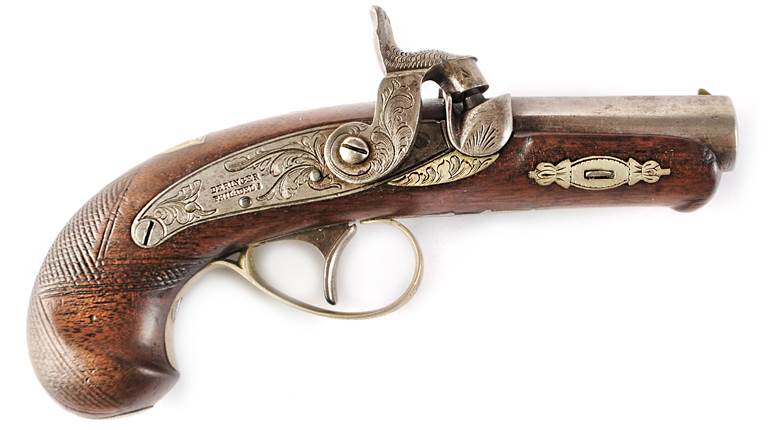
In 1833, the United States took the daring step of arming its brand-new First Regiment of Dragoons with the innovative Hall carbine. That put America in the forefront of military technology by making it one of the premier nations to provide its regulars with percussion, breechloading firearms.
Through the years, the Hall underwent a series of modifications and alterations intended to improve loading and handling characteristics, but by the time the last model appeared in 1843, the system, which had been introduced in 1819, was considered a bit long-in-the-tooth. Other, more efficient mechanisms were appearing, and during its years of service there were some justified (and unjustified) complaints from the field about the Hall’s performance. Ultimately, it was decided that the Hall would be phased out.
The emergence of new, innovative firearms notwithstanding, conservative U.S. Ordnance Dept. officials decided the breechloading experiment could take a bit of a hiatus while they regrouped, and decided to equip mounted troops with an old-fashioned smoothbore muzzleloader.
Adopted in 1847, the percussion Cavalry Musketoon was actually an attenuated version of the excellent U.S. Model 1842 Musket. Manufactured at Springfield Armory, the 1847 was handsome and made to high manufacturing standards. All steel parts were polished bright, and the furniture was brass. The round, .69-cal. barrel measured 26-inches long-as opposed to the 1842’s 42-inch tube-and overall length was 41 inches. It weighed 7.4 pounds, about a pound less than the Model 1843 Hall.
A long sling bar was attached to the left side of the stock, and a button-head captive ramrod was attached to the barrel via a swivel setup mounted on a stud brazed just behind the muzzle. Despite the fact that swivel ramrods had been used successfully by other military forces since at least the early 19th century, the fixture on the 1847 was found to be fragile and prone to breakage. The solution was found by lengthening the rod and attaching it to the stock by a sleeved chain. Also, a spoon retainer was added to the inside of the stock. Most 1847s encountered today have swivels. Chained carbines are quite scarce, bring a premium and are often faked.
Though possessed of a tried-and-true system, the 1847 came in for a fair share of criticism. As well as the ramrod problem, troops carped that the bullets had a tendency to move forward in the barrel during field service. The guns were loaded with a round ball contained within a paper cartridge, so it’s understandable that the jouncing of a cavalry steed could cause the load to unseat, particularly when the carbines were carried on the saddle, muzzle-down, in a strap/boot arrangement.
Musketoons of similar pattern to the cavalry version were issued to artillery and sappers (engineers), the primary differences being the lack of a sling bar, the addition of sling swivels, separate ramrods and bayonet lugs.
Just more than 6,000 M1842 Cavalry Musketoons were made between 1847 and 1859, at which time the military again embraced the breechloader, primarily in the guise of the superb Sharps system. Some 1847s were also later rifled and fitted with adjustable rear sights.
The carbine depicted here is in superb condition, with the steel parts retaining their high polish, the walnut stock relatively free of blemishes and still showing its inspector’s cartouche. The brass is a mellow mustard color, and the mechanics and bore are in perfect condition. As such, this piece would easily bring between $5,500 and $6,000.
Gun: U.S. Model 1847 Cavalry Musketoon
Caliber: .69
Manufacturer: Springfield Armory
Serial number: None
Manufactured: 1848
Condition: NRA Antique Excellent
Value: $5,500-$6,000





































